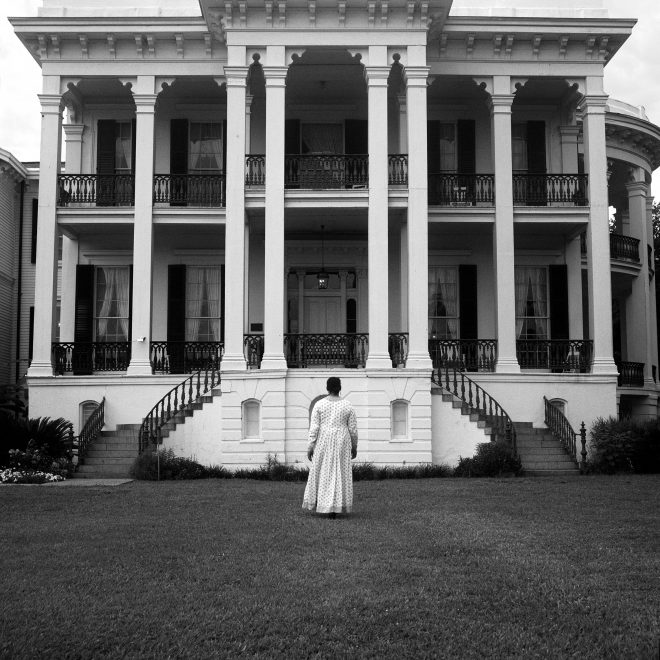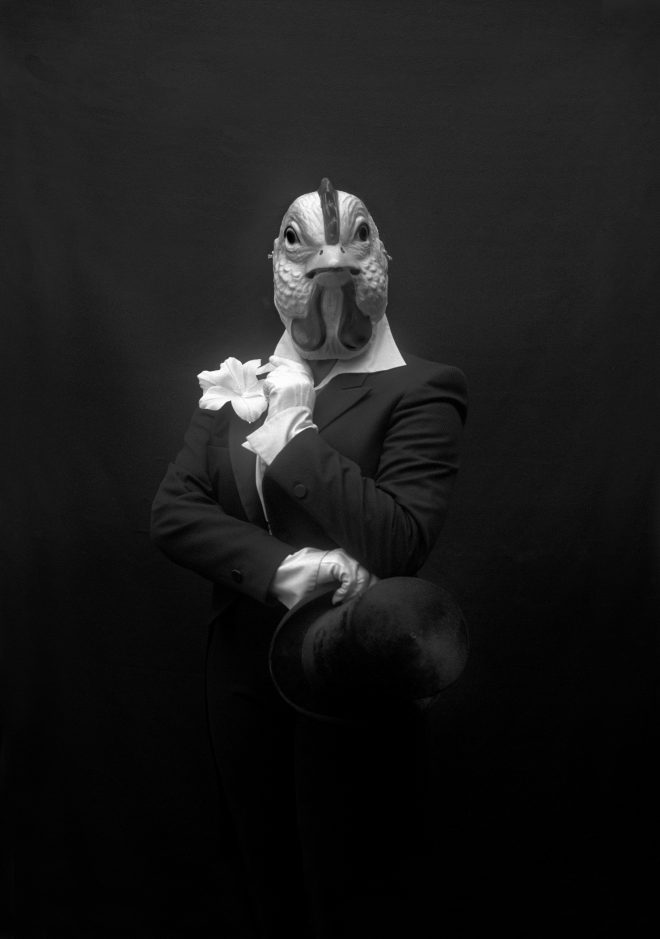Ghosts of the Past: Carrie Mae Weems at the McKenna Museum
Octavia Fortuné reviews Carrie Mae Weems and the return of "The Louisiana Project" to New Orleans for Prospect.3.

Carrie Mae Weems, At the Precipice, 2003. gelatin silver print. Courtesy the artist and Jack Shainman Gallery, New York.
Carrie Mae Weems
George & Leah McKenna Museum of African American Art
2003 Carondelet Street
October 25, 2014 - January 25, 2015
Carrie Mae Weems’ The Louisiana Project originally debuted in 2003 as a commission from the Newcomb Art Gallery at Tulane University. It was conceived in response to the bicentennial of the Louisiana Purchase that year. Weems’ Prospect.3 exhibition at the George & Leah McKenna Museum of African American Art presents a selection of works from this same series installed in a front room of the mansion-turned-museum along with the artist’s 2012 multimedia installation Lincoln, Lonnie, and Me—A Story in 5 Parts on the second floor.
When I arrived, I was directed upstairs, bypassing the first floor entirely. Housed in a darkened room, the “Pepper’s Ghost” illusion that is the basis for Lincoln, Lonnie, and Me is effective and haunting, the historical references apt. In spite of (or perhaps because of) this, the moment I peeked behind the black curtain to enter I was instantly uncomfortable with the decontextualized visual performance of minstrelsy in a room where I couldn’t see anyone else or their reactions. Though I live happily here, this is still the South, where Weems’ images can feel like more than just specters. Would it have mattered to see the video and photographs downstairs first? No; though the works can be connected, they are not sequentially related and couldn’t have softened the blow. Ultimately the ability of Lincoln, Lonnie, and Me to throw me off so quickly is surely what provocateur Weems intended.
The excerpt from The Louisiana Project downstairs is anchored by a series of self-portraits that Weems made as she traveled around the region. Clad in a simple, floor-length calico dress, she bears witness to landscapes heavily laden with economic, environmental, cultural, and social histories that have shaped Louisiana since well before it became a part of the United States. Weems walks on the grounds and dances in the parlor of an antebellum plantation; she treads upon the porch of a traditional Louisiana cottage, stands sentry at oil refineries dotting River Road, and gazes helplessly on a New Orleans street at a beer ad that makes a mockery of black men. Weems’ presence in all of these photographs is a tangible reminder of the countless crimes against, injustices toward, and persistent degradation of African bodies upon this land. Although visually Weems’ photographic imagery is often deceptively straightforward, she is truly a conceptual artist. The viewer must look past the surfaces and read between the frames, just as Weems herself has done with this complex history. Even when the black body is not present within the frame, Weems reminds us, and the depth of knowledge, perception, and research upon which she draws is staggering.
Scale and pacing are crucial for the success of Weems’ work, and her timing is impeccable. Unfortunately Prospect and the McKenna missed an opportunity to use their remarkable, expansive exhibition space to highlight and reinforce the narrative in this particular body of work. I kept imagining what it would have been like, for example, had The Louisiana Project’s “witness” images been spread throughout the museum and allowed to interact with and comment anew upon the permanent collection, just as the figure moves in and around the landscape. Instead of functioning to create new meanings or being shown in totality as was originally intended, the segregation of the series into what feels like a special projects space inside the larger institution, and a floor removed from the incredibly affecting Lincoln, Lonnie, and Me, renders the work itself into a historical exhibition archive rather than a still critical, vital, and expanding interrogation of race, memory, and history.

Carrie Mae Weems, Missing Links Chicken, 2003. iris print. Courtesy the artist and Jack Shainman Gallery, New York.



